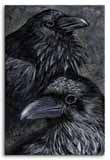|
|
|||||

|
A Statement of Teaching Philosophy
As a teacher, I seek to challenge students while at the same time providing for them the necessary support so that they are not overwhelmed by the challenges of our course. And just as I seek to challenge students, I seek to challenge myself. I try to include texts that are new to me and texts that I am still grappling with, and I seek out new pedagogical methods, new assignments and activities, and new educational technologies. While this is how I teach, why I teach as I do is informed by my readings in pedagogical and cognitive theory. Supporting my pedagogical methods are three fundamental ideas: That learning is a process of literacy, that effective teaching and learning are dialogic, and that teaching should be informed by cognitive theory. Teaching and Learning as Literacy As one who studies oral traditions, I have reservations with using literacy as a general term for fluency in a practice, tradition, or discourse. And yet, at the same time, I recognize as Paul Prior does that “Literate activity […] is not located in acts of reading and writing, but as cultural forms of life saturated with textuality, that is strongly motivated and mediated by texts” (Writing/Disciplinarity 138). Because learning is a process that occurs through time, I believe that my job is to engage students at their current level and help them gain as much fluency in our subject as they can in the amount of time that we have. To this end, I make regular use of low-stakes assignments and assignment sequencing that allows students the time and experience necessary to become fluent with the methods, practices, and concepts of our course. And since I believe writing is part of this process of becoming fluent, I make revision a formal part of the courses I teach, and I allow graded papers to be rewritten when such an option is programmatically and pragmatically feasible. Teaching and Learning are Dialogic “Truth,” Walter Ong used to say, “is in the dialogue.” Like Ong, I believe that teaching and learning are inherently dialogic acts. Both require communication and reflection upon what has been communicated. Even when we learn from experience, that experience becomes knowledge through an internal dialogic process of analysis and reflection that equates the new information with what we already know by contextualizing it in a way that allows us to make sense of the experience. To this end, in addition to in-class discussion, I regularly use assignments that involve collaborative learning and reflection, and most of my courses involve some form of structured online discussion in which I ask students to practice and explore the ideas and concepts of the course and to comment on and receive feedback from each other. Teaching and Cognitive Theory I believe that teaching needs to be informed by theories of learning and cognitive science. We know, for instance, that people learn differently, that while some people learn best aurally, others learn more easily from visual materials, and that others learn best when movement is involved; and we know that the more senses which are involved, the more likely all students will learn the material. Likewise, as we know that concrete images are easier to remember than abstract ideas, I often try to pair abstract concepts with specific, vivid images that students can more easily remember. For example, when I teach literature, I often connect important themes to specific, vivid passages from the text, often embellishing them even further, and thereby creating a mnemonic image we can use both to represent the concept itself and to help us remember it. “The American Scholar” as Metaphor While Emerson’s “The American Scholar” represents an important moment in my teaching, the quote above represents what I want most for students: that they come to realize that knowledge is not just something they learn but something that they can create and share with others. |
||||
|
|||||